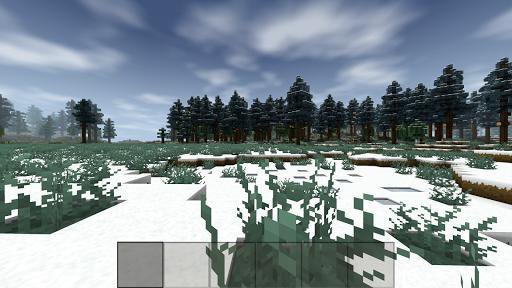

The M.Bank in the pointer is programmed to accomplish its necessary functions as follows. The clock input must also return-to-zero before being activated again. (There is no write function for these M.Banks.) So the total number of possible functions available is 8. For the clock to perform a read, the high bit must be '1'. Connecting to the clock input forces the M.Bank into synchronous mode so the output will not change until another READ command is received. The function input is fed to both the high address and the clock input. The function input (high address) and I/O control (clock) of the M.Bank may be initiated in the same tic and the proper output will be present for the next tic. This counter is implemented with a single Memory Bank. The control functions are +1, +2, -1, -2, IDLE and RESET. The stack pointer is a very fast dedicated counter. The controller is a small, fast micro-sequencer. The memory is a small and fast RAM system. The pointer is a dedicated, specialized, fast counter. There are three components in the stack controller - the stack pointer, the stack memory and the controller. Instead, the stacks's data output connects directly to an input of the PC and the data input comes only from the PC. ?-The Return Stack data is not accessible to other parts of the system - only to/from the Program Counter. In that case the changes will be manageable to shrink the stack to 16 locations. As testing progresses it may be found that either a 16 word depth is sufficient or the extra 2 tics is significant. This system will initially be designed with the greater depth. However to gain 256 word depth, the access time is only 2 tics more. The fastest access is obtained with only a 16 word deep stack. This allows other critical information to be saved on this stack as well. ?-In this design, the top of the return stack may also be pushed or popped from/to the Data Stack (& the system data bus?). This means the stack pointer always points to a valid address on the top of the stack. (?)Īs hinted above, this is a pre-increment write PUSH design. RESET_R - Sets the stack pointer to '0', writes '0's to this location and updates the stack output.RP0 - Zero stack pointer (without modifying the memory or output).RP- DEC stack pointer (without modifying the memory or output).RP+ - INC stack pointer (without modifying the memory or output).Without additional external circuitry, this will ALWAYS write the current IP value. R! - Write to the top of the stack (without changing the pointer).Since the output is ALWAYS latched at the end of the primary functions, this is superfluous and may be left out of the final design. - Read the top of the stack (without changing the pointer).PUSH - INC the pointer and store an element to the new top of the stack.POP - Delete an element from the top of the stack (DEC the pointer).IDLE - Does nothing to the pointer or memory.The return stack does not need the same flexibility as a parameter stack. There is no provision to explicitly write the return stack pointer. To help facilitate this, the stack pointer (RP) may be read onto the Data Stack (&/or the data bus?). There is no overflow or range checking done, to save on time and system complexity! The programmer must assure that the stack does not over/under flow. Since this is so large, I will assume no proper program will approach this limit.
SURVIVALCRAFT 2 PC WIKI ANDROID
BlueStacks app player is the best platform (emulator) to play this Android game on your PC or Mac for an immersive gaming experience.The stack uses an independent memory array, so avoids any possibility of a stack overflow corrupting other memory. Survivalcraft is an Action game developed by Candy Rufus Games. How do you make a sword in survival craft?.What is proficiency in survival craft and rescue boats?.What are some different types of survival craft?.How do you join people in survival craft?.How do you make stuff in survival craft?.What is the difference between survival craft and survival craft 2?.
SURVIVALCRAFT 2 PC WIKI FOR FREE


 0 kommentar(er)
0 kommentar(er)
